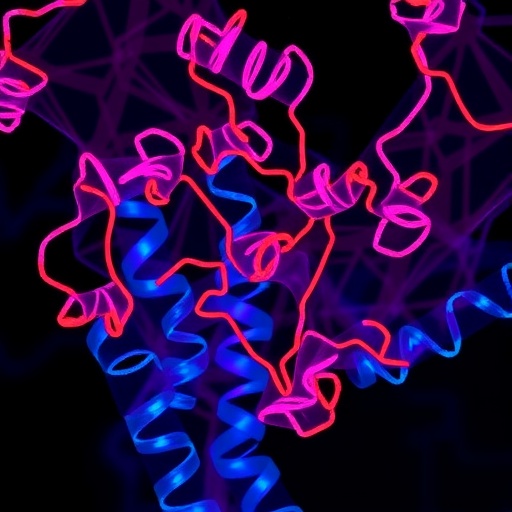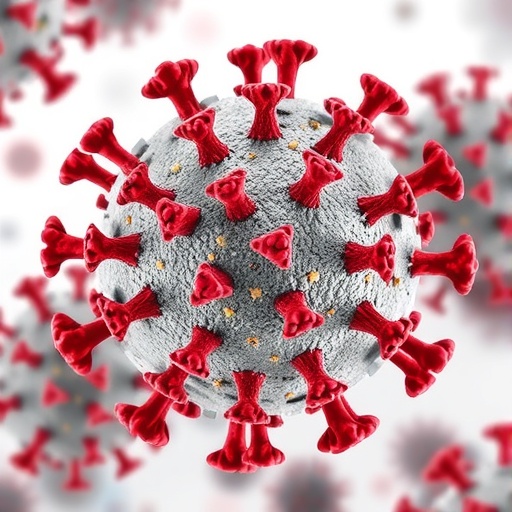In a breakthrough that promises to deepen our understanding of cellular regulatory mechanisms, researchers have identified phospholipid scramblase 1 (PLSCR1) as a previously unknown substrate of ubiquitination mediated by the E3 ubiquitin ligase NEDD4-2, also known as NEDD4L. This revelation sheds new light on the complex pathways governing membrane dynamics and cellular homeostasis, with implications for both basic biology and potential therapeutic interventions. The study, recently published in Cell Death Discovery, unveils the nuanced interaction between these two pivotal proteins and underscores the evolving landscape of post-translational modifications shaping cell fate.
Phospholipid scramblases are integral membrane proteins involved in the bidirectional translocation of phospholipids across the lipid bilayer, a process critical for maintaining membrane asymmetry and facilitating various physiological events such as apoptosis, coagulation, and cell signaling. Among this family, PLSCR1 stands out for its multifaceted roles that extend beyond its canonical scramblase activity, including modulation of gene expression and participation in immune responses. Despite its importance, the regulatory mechanisms dictating PLSCR1 stability and function have remained elusive, leaving a significant gap in our comprehension of how cells fine-tune scramblase activity under diverse conditions.
.adsslot_ljtCd8BXgS{width:728px !important;height:90px !important;}
@media(max-width:1199px){ .adsslot_ljtCd8BXgS{width:468px !important;height:60px !important;}
}
@media(max-width:767px){ .adsslot_ljtCd8BXgS{width:320px !important;height:50px !important;}
}
ADVERTISEMENT
Experimental approaches employed in this study involved a combination of co-immunoprecipitation assays, ubiquitination analysis, and mutational studies that collectively delineated the molecular interaction between PLSCR1 and NEDD4-2. These rigorous investigations confirmed that NEDD4-2 directly binds to PLSCR1 and facilitates its ubiquitination. Moreover, the researchers identified specific ubiquitination sites critical for this modification, which provides a molecular footprint essential for understanding the post-translational control exerted over PLSCR1. Such precision in mapping interaction sites is vital for envisaging targeted therapeutic strategies.
The functional consequences of this ubiquitination event were probed by examining the stability and membrane localization of PLSCR1 following modification by NEDD4-2. The data suggest that NEDD4-2-mediated ubiquitination leads to altered cellular distribution of PLSCR1 and may trigger its proteasomal degradation, implying a tightly regulated lifetime for the scramblase within the cellular milieu. This regulatory mechanism adds to the growing appreciation of ubiquitination not merely as a destruction signal but as a versatile modulator of protein function and trafficking.
Interestingly, the study also explores the physiological contexts under which NEDD4-2 exerts control over PLSCR1, including stress responses and signaling cascades known to perturb membrane lipid compositions. By linking external conditions to the internal regulatory network, this research opens avenues for understanding how cells remodel their membrane architecture in response to environmental cues, with PLSCR1 acting as a pivotal node in this dynamic process. Such insights have profound implications for conditions marked by membrane dysregulation, such as cancer, neurodegenerative diseases, and viral infections.
Contextualizing this finding within the broader framework of cellular ubiquitination pathways, the identification of PLSCR1 as a NEDD4-2 substrate reaffirms the multifaceted roles of E3 ligases in governing key aspects of cell biology. NEDD4-2 itself has previously been implicated in regulating various ion channels and signaling receptors, making this discovery a valuable addition to its repertoire and suggesting common themes in membrane protein homeostasis. Unraveling these interconnected pathways will be crucial for developing molecular therapies aimed at modulating ubiquitin signaling.
On a structural biology front, the study’s findings prompt a reexamination of how scramblases interact with ubiquitin ligases at the molecular level. Given the transmembrane nature of PLSCR1, understanding how NEDD4-2 accesses and modifies this substrate may necessitate novel conceptual frameworks or the discovery of adaptor proteins. The possibility that lipid microdomains or cellular compartments govern these interactions introduces complexity and precision to the ubiquitination mechanism that warrants further investigation.
The implications of PLSCR1 ubiquitination extend beyond fundamental cell biology, hinting at potential roles in pathophysiological conditions. Aberrant regulation of scramblase activity can influence apoptotic signaling, immune evasion by tumors, and viral entry processes, all of which intersect with the biological functions of NEDD4-2. Therefore, deciphering this newly identified regulatory axis holds promise for informing the design of therapies that either enhance or inhibit PLSCR1 function, depending on the disease context.
Furthermore, the study’s comprehensive methodology, combining biochemical assays with advanced proteomics and imaging techniques, underscores the value of integrative approaches in uncovering protein interaction networks. The strategic use of mutagenesis to dissect ubiquitination sites sets the stage for future high-throughput screens aimed at identifying modulators of the PLSCR1-NEDD4-2 interaction. Such tools will accelerate the translation of basic research findings into clinical and pharmacological applications.
From a translational standpoint, the modulation of PLSCR1 ubiquitination by NEDD4-2 might be exploitable in drug discovery programs targeting diseases characterized by perturbed membrane dynamics. Small molecules or biologics designed to inhibit or enhance this ubiquitination event could restore cellular homeostasis or selectively induce cell death in pathological cells. This therapeutic angle is particularly attractive given the druggable nature of the ubiquitin-proteasome system and the rising interest in targeting protein turnover pathways.
In conclusion, this landmark study brings to the forefront PLSCR1 as a novel substrate for the ubiquitin ligase NEDD4-2, expanding the map of post-translational modifications that sculpt membrane protein function and stability. By unveiling this regulatory interface, the research invites a reassessment of how cells orchestrate lipid scrambling in response to physiological demands and stress conditions. The findings promise to invigorate future studies aimed at deciphering the complexities of membrane biology and advancing targeted therapeutic strategies.
As our understanding of ubiquitin-mediated regulation continues to deepen, the revelation of the PLSCR1-NEDD4-2 relationship underscores the intricate crosstalk between membrane dynamics and cellular signaling. It exemplifies how the convergence of molecular biology, biochemistry, and structural studies can illuminate previously unrecognized pathways with far-reaching biological and clinical significance. This study stands as a testament to the power of detailed mechanistic insights in driving forward the frontiers of cell biology.
Given the centrality of phospholipid scramblases in numerous cellular processes and the versatility of E3 ligases like NEDD4-2, the potential for uncovering additional substrates and regulatory interactions remains vast. The framework established by this research not only addresses a critical gap but also lays a foundation for a new area of investigation into membrane protein ubiquitination. This advances the broader quest to decode the complex regulatory language of the cell.
Future explorations inspired by these findings will likely focus on the dynamic regulation of PLSCR1 in different cell types, developmental stages, and disease states, offering a window into how ubiquitination fine-tunes cellular physiology. The interplay between lipid signaling and protein turnover unveiled here exemplifies the sophisticated control mechanisms that sustain cellular life and highlights the therapeutic promise embedded in these pathways.
As the scientific community digests these new insights, the identification of PLSCR1 as a NEDD4-2 substrate is poised to catalyze a wave of research probing the multifaceted roles of ubiquitination in membrane biology. The fusion of discovery and innovation embodied in this study augurs well for both enhanced biological understanding and the development of next-generation biomedical interventions.
Subject of Research: Regulatory mechanisms of phospholipid scramblase 1 (PLSCR1) by NEDD4-2 (NEDD4L)-mediated ubiquitination.
Article Title: Phospholipid scramblase 1 (PLSCR1) is a novel substrate of NEDD4-2 (NEDD4L) mediated ubiquitination.
Article References:
Shabbar, M., Manning, J.A., Lim, Y. et al. Phospholipid scramblase 1 (PLSCR1) is a novel substrate of NEDD4-2 (NEDD4L) mediated ubiquitination. Cell Death Discov. 11, 393 (2025). https://doi.org/10.1038/s41420-025-02700-9
Image Credits: AI Generated
DOI: https://doi.org/10.1038/s41420-025-02700-9
Tags: apoptosis and coagulation processescellular homeostasis mechanismsE3 ubiquitin ligase functionsgene expression modulationimmune response involvementimplications for therapeutic interventionsmembrane dynamics researchmembrane protein stability regulationNEDD4-2 ubiquitination pathwayphospholipid scramblase regulationPLSCR1 substrate identificationpost-translational modifications in cells





